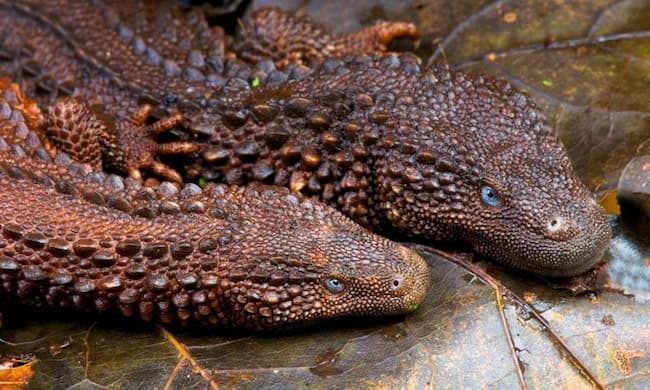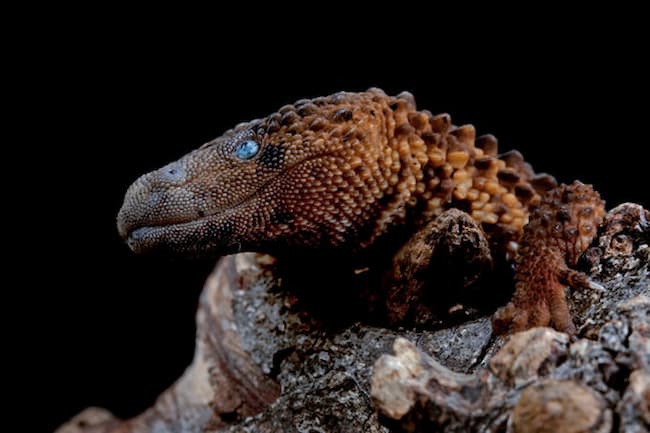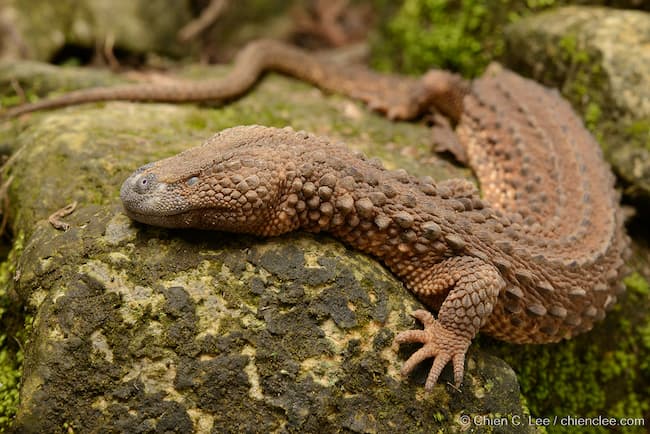Researchers are just beginning to understand the enigmatic life of the earless lizard species in Borneo, an island in Southeast Asia.

The earless lizard is an extremely rare dragon-like reptile, earning the nickname “Holy Grail” in herpetology (the study of reptiles and amphibians).
This species is the only known member of the Lanthanotidae family. This means that researchers have not discovered any other similar living species to date. The most recent common ancestor of this lizard is believed to have diverged in the Cretaceous period (145 million to 66 million years ago).

Measuring up to 50 cm, the earless lizard has a slender body, small limbs, and a tiny tail that captures intricate details. Their heads lack external ears, earning them the name “earless lizard,” and their lower eyelids close when submerged underwater.

According to a 2014 report by TRAFFIC, a wildlife trade monitoring organization, scientists still know little about this mysterious lizard, but they believe that its adaptations are suited to an underground lifestyle.
According to a 2013 article in Herpetological Review, the earless lizard burrows beneath the vegetation and rocks along rocky stream banks during the day and emerges at night to forage both on land and underwater. Their scaly skin picks up dirt, providing effective camouflage when they come out.

It is believed that the earless lizard uses its tail as an anchor, wrapping around rocks and tree roots to avoid being swept away during floods. They mate in water, and the mating sessions can last for hours.
According to the Animal Diversity Web, the unusual appearance of the earless lizard initially led scientists to consider a relationship between snakes and lizards, but this idea was later dismissed.
The earless lizard is endemic to Borneo, where it faces threats from deforestation and the pet trade, according to the IUCN Red List of Threatened Species.

